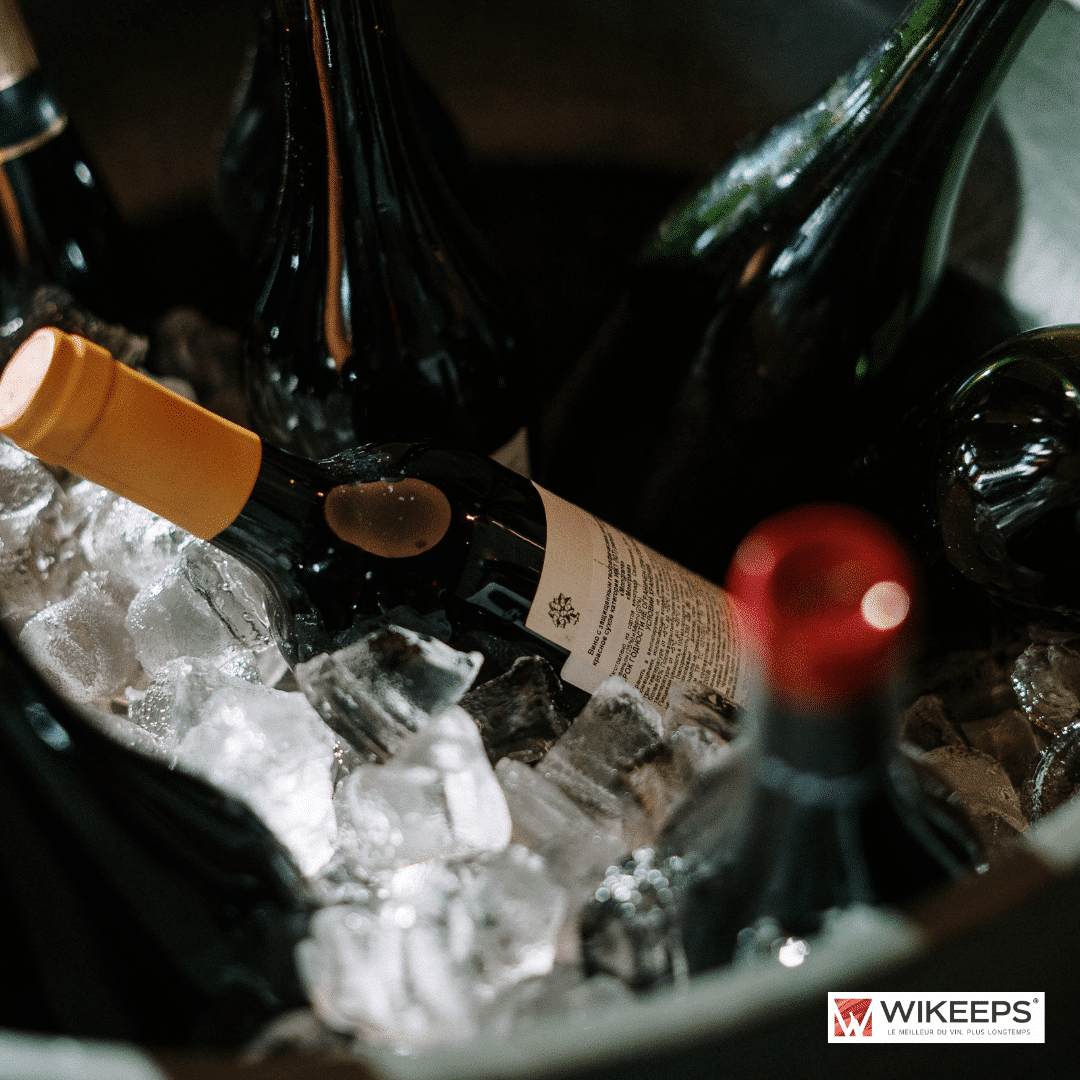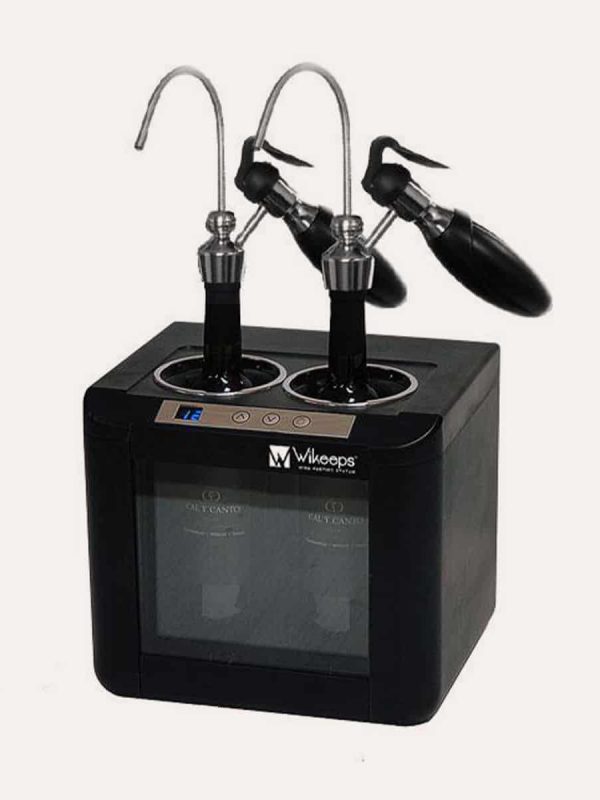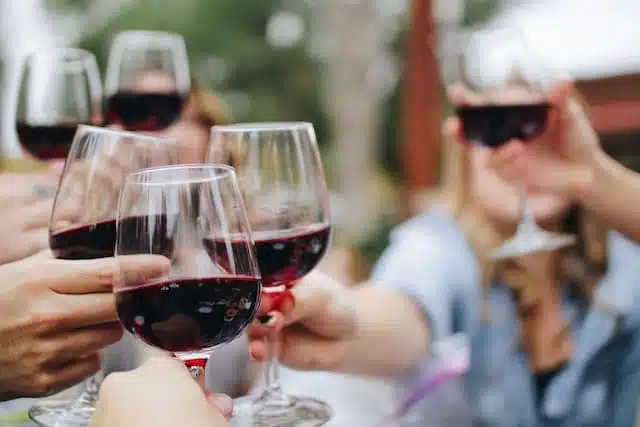Nothing elevates a glass of wine quite like serving it at the perfect temperature. This essential guide reveals the ideal temperature ranges for sparkling wine, white, rosé, and red wine, showing how each influences flavor and aroma. You’ll also discover quick methods to adjust bottle temperature and learn why proper storage is key for serving wine at its best.
Mastering wine serving temperature
Temperature dramatically impacts a wine’s character – it can either highlight or hide a wine’s best qualities. Chilled sparkling and white wines showcase vibrant acidity and fresh fruit notes, while slightly warmer red wines allow complex aromas to unfold and tannins to soften. Understanding these principles ensures every wine tasting experience reaches its full potential.

Why temperature shapes aroma and balance
The magic happens between 8-13°C – this range preserves the perfect balance of fruit, acidity, and structure in most whites, rosés, and sparkling wines. Too cold (below 6°C) and you’ll mute the aromas; too warm (above 20°C) and the alcohol becomes prominent while flavors turn flat. The ideal serving temperature brings all elements into harmony.
Understanding the 20 and 30 rules
Two simple techniques help achieve the correct temperature efficiently. Wait 20 minutes after removing white wine from the fridge to let it warm slightly. For reds, try the 30/30 approach: chill for 30 minutes before opening, then let it breathe for 30 minutes. These methods bring most wines close to their ideal serving range.
- Sparkling wines : Keep Champagne at 6-8°C and Prosecco at 6-10°C for the most elegant bubbles and delicate aromas.
- Light and unoaked whites : Serve between 8-10°C to maintain that refreshing crispness we love in Sauvignon Blanc and dry rosé.
- Fuller or oaked whites : A slightly warmer 10-13°C allows the complexity of barrel-aged Chardonnay to shine.
- Dessert and late-harvest whites : 8-10°C is perfect for balancing the richness of Sauternes or ice wine with bright acidity.
These temperature guidelines ensure each wine shows its true colors. A little extra chill keeps wines fresh and vibrant, while slight warming opens up the aromas – especially beneficial for fuller-bodied whites and reds.
Room temperature vs cellar temperature
When we say “serve red wine at room temperature,” we mean the cool 15-18°C of traditional European cellars – not modern centrally-heated rooms around 20°C+. This cooler range allows red wine to show its best: mellowed tannins, developed aromas, and preserved acidity.
Never serve or store wine above 25°C, as heat damage is permanent. If your red wine gets too warm, quickly chill it for about 30 minutes in the fridge or 10 minutes in an ice bath before serving at the correct temperature.
Red wine temperature essentials
Red wines show their best when served slightly warmer than whites because heat gently softens tannins and releases complex aromas. For ideal enjoyment, serve lighter varieties like Beaujolais at 13–15°C (55–59°F), while medium-bodied Merlot shines between 15–17°C (59–63°F). Fuller reds such as Cabernet Sauvignon reach their peak at 17–20°C (63–68°F). For practical purposes, maintaining a serving temperature of 15–18°C (59–64°F) works beautifully for most reds at the table.
Set targets for light, medium, and full-bodied reds
Delicate Pinot Noir and similar light reds taste vibrant when served at 13–15°C (55–59°F) – this lower range keeps their fruity character crisp without letting alcohol dominate. For medium-bodied wines like Merlot, aim for 15–17°C (59–63°F) to balance supple tannins and bright acidity, ensuring the wine doesn’t become flat from excessive warmth.
Bold reds including Cabernet and Barolo need 17–20°C (63–68°F) to mellow their robust tannins and unlock rich aromas. Most professionals recommend 15–18°C (59–64°F) as a versatile sweet spot – hold your glass by the stem to prevent warming the wine beyond its ideal temperature.
In warmer climates, pour smaller quantities so each serving stays within the correct range longer. Always keep bottles away from heat sources like sunlit surfaces, as room temperature can quickly push wine past its ideal point. For precise control, use a thermometer during tasting.
Cool or warm reds quickly and safely
If your red is too warm, chill it to 15–18°C (59–64°F) by placing it in an ice-water bath for 10 minutes or in the fridge for half an hour. Alternatively, take full-bodied wines out of cool storage about an hour before serving, allowing gradual warming while decanting preserves their aromatic complexity at the perfect temperature.
While decanting enhances flavor and texture, remember it doesn’t replace proper temperature management. First bring your bottle to the correct serving temperature (15–18°C), then transfer to a decanter. This two-step process ensures ideal serving conditions with beneficial aeration for balanced taste.
Decanting while preserving serving range
For premium wines, decant at least an hour before serving to develop their bouquet – but always verify the wine is near its target temperature first. With aged reds, store the bottle upright for 24 hours to settle sediment, then decant gently at 15–18°C (59–64°F) to protect delicate textures from temperature shock.
For multiple tastings, try glass-by-glass decanting with a preservation system. Pour individual portions while keeping both the main bottle and serving vessel at optimal temperature. This method maintains freshness across several days while ensuring each tasting remains at the ideal range.
White and rosé temperature guide
Serving white and rosé wines at the right temperature makes all the difference. When properly chilled to 8-10°C, crisp whites and dry rosés reveal vibrant fruit flavors and refreshing acidity. Fuller-bodied oaked whites like Chardonnay show best slightly warmer at 10-13°C, while sweet dessert wines maintain perfect balance when served at the cooler end of the spectrum (8-10°C). This careful temperature control ensures every sip delivers the wine’s true character.
Chill ranges for white and rosé styles
Light, zesty whites like Sauvignon Blanc shine when served at 8-10°C – this ideal serving temperature highlights their citrusy freshness. For richer, oak-aged whites, let them warm slightly to 10-13°C to release their creamy textures. Rosé wines follow similar rules: dry versions stay crisp and refreshing at 8-10°C, while sweeter styles keep their balance at this same optimal chill.
Remember that extreme temperatures distort flavors. White or rosé wine served too cold (below 6°C) loses its aroma, while wine over 13°C tastes flat and flabby. The right white wine serving temperature makes every glass sing.
Fast chilling without overdoing it
Need to cool wine quickly? A pro tip: the ice bucket method. Mix equal parts ice and water, then submerge the bottle for about 20 minutes – this chills wine faster than a refrigerator. Keep this setup handy during serving to maintain the perfect temperature.
If wine gets too cold, simply let it rest for 10-30 minutes before pouring. Use chilled (not frozen) glasses to avoid diluting flavors with condensation. In warm weather, pour smaller servings and hold your glass by the stem to prevent heat transfer – this keeps every sip at its optimal white wine serving temperature.
Sparkling temperature and service
To fully enjoy sparkling wines, serve them at cooler temperatures—this helps maintain their refreshing bubbles, bright acidity, and delicate aromas. Champagne tastes best at 6–8 degrees, while other sparkling varieties like Prosecco show their best between 6 and 10 degrees. Keeping them at the right wine serving temperature ensures every sip stays lively and flavorful.
Keep effervescence while serving
For the perfect bubbly experience, serve Champagne chilled to 6–8 degrees and other sparkling wines slightly warmer at 6–10 degrees. Use an ice bucket at the table to maintain freshness, but avoid leaving the bottle submerged too long—extreme cold can mute delicate flavors. Sticking to this sparkling wine serving temperature range preserves both fizz and complexity.
When pouring, hold the glass slightly below the spout to minimize splashing and excess foam. A smooth, steady pour helps keep carbonation intact. Always use chilled (never frozen) glasses—frosted stems distort taste perception while chilled ones enhance aromas and maintain serving temperature.
Fridge versus room for serving
Refrigeration works well for short-term storage of white, rosé, dessert, and sparkling wines you plan to serve soon. Red wines do better in a slightly cooler space (10–15 degrees) rather than at room temperature; serving them at 15–18 degrees balances their structure without flattening flavors.
For long-term wine storage, maintain stable conditions: 10–15 degrees, 60–70% humidity, and minimal light/vibration. Wine fridges are ideal; regular fridges are only for temporary chilling. Never store or serve wine above 25 degrees—heat accelerates aging and dulls flavors permanently.
Innovative preservation systems like Wikeeps extend opened bottles’life by replacing oxygen with inert gas—keeping wines fresh for weeks. Their guide covers key serving tips: chill whites, rosés, and sparklers in an ice bucket, serve reds at 15–18 degrees, pour gently, and combine decanting with preservation for the best results.
Wine serving, storage and control
Transferring wine from storage to your glass requires careful temperature management to maintain perfect aromas and balance. With proper preparation, preservation methods for opened bottles, and accurate temperature tools, you can serve every wine at its ideal degrees – transforming ordinary wine serving into an elevated experience that respects the vintner’s craft.
From cellar to table without shock
For optimal wine storage, maintain bottles at 10-15°C with 60-70% humidity in a dark, vibration-free space. When preparing to serve, gradually adjust cellar-cooled bottles (around 12-14°C) to their perfect serving temperature in a wine fridge. This slow transition prevents thermal shock that could dull flavors or damage structure – whether you’re opening prized reds or everyday white and rosé bottles.
- Position aged red wine upright: Stand mature bottles vertically for a day before serving at 15-18°C; this lets sediment settle for clearer pouring.
- Invest in a dedicated wine fridge: A unit maintained near 10-14°C keeps all varieties ready for quick temperature adjustments before serving.
- Watch for heat damage: Never expose wine to temperatures above 25°C – kitchen counters and ovens can permanently damage flavors beyond repair.
While a regular refrigerator works for short-term chilling of white or sparkling wine, its dry air makes it unsuitable for long-term storage. For red wine service, let bottles warm for 30-60 minutes to reach 15-18°C, or use an ice bucket for quick 10-minute cooling when needed.
Preserve opened bottles between servings
The Wikeeps system uses food-grade Argon/CO₂ gas to create an oxygen-free environment in opened bottles, preserving wines for weeks at any temperature. Since it seals the bottle neck completely, you can alternate between serving chilled sparkling wine and room-temperature reds without losing quality. Always recap after pouring to protect remaining wine from oxidation during storage.
Store Wikeeps-equipped bottles upright in your refrigerator or wine fridge to maintain the seal and monitor temperature easily. Pair the system with a Bernoulli aerator to properly oxygenate each glass while keeping the rest protected – perfect for tasting events or enjoying a bottle over several days.
Tools for precise temperature control
Use a digital thermometer (inserted at the bottle’s shoulder for red wine or deeper for white/rosé) to monitor temperature accurately during multi-course meals or wine tastings. Instant readings eliminate guesswork and help make timely adjustments.
For quick cooling, submerge bottles in an ice-water bath (1:1 ratio) to lower temperature by about 10°C in 20 minutes – much faster than refrigeration. When serving white, rosé, or sparkling wines from an ice bucket, periodically remove them to prevent over-chilling that could mute flavors.
| Wine style | Target temperature | Cooling method | Serving note |
| Champagne | 6–8°C | Ice bucket 20 min | Hold glass close to spout |
| Light whites & rosé | 8–10°C | Fridge 2–3 hours | Chilled glasses, not frozen |
| Fuller whites | 10–13°C | Fridge then 10 min rise | Pour smaller amounts |
| Light reds | 13–15°C | 30 min fridge from cellar | Hold stem, not bowl |
| Full-bodied reds | 17–20°C | 30–60 min rise from cellar | Decant at target temp |
Combine a thermometer with Wikeeps to maintain the optimum temperature across multiple servings over days or weeks. Between different wines, rinse the gooseneck, replace caps immediately, and always check temperature before pouring to ensure perfect tasting conditions from start to finish.


